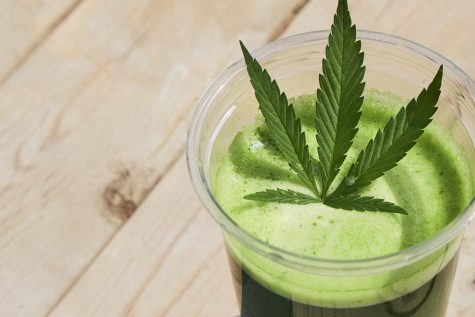CBG: What is this cannabinoid and what are the health benefits of consuming it?
CBG’s medicinal properties prove its suitability as a treatment for patients with anti-inflammatory disorders, cancer, chronic pain, depression, epilepsy, glaucoma, Huntington’s disease, osteoporosis and psoriasis
If you know anything whatsoever about cannabis, whether in its recreational or medicinal form, you will know that the effects produced are dependent on the plant’s cannabinoid content.
The chemical compounds contained in the cannabis plant are known as cannabinoids and if you really get to know what these naturally-occurring chemicals are, you can select a specific strain with a cannabinoid composition that best suits your circumstances. These chemicals interact with CB1 and CB2 cannabinoid receptors in your brain to trigger a range of therapeutic effects. Now, we’re going to talk about a cannabinoid called Cannabigerol or ‘CBG’ as scientists prefer to call it.
Interestingly, it is thanks to this particular cannabinoid that we have other dominant cannabinoids, including the psychoactive high-inducing cannabinoid Tetrahydrocannabinol (THC) and the non-psychotropic cannabinoid cannabidiol (CBD).
One of more than 120 identified compounds contained in the plant genus Cannabis, CBG – just like other cannabinoids – comes in acidic and non-acidic forms. It can also be found in abundance in the hemp plant. When in its non-acidic form, CBG is the parent molecule that synthesizes other cannabinoids by merging with Geranyl pyrophosphate (GPP or GDP) and Olivetolic acid (OLA).
High-THC strains of weed tend to contain low levels of CBG, which is ironic considering the fact that this cannabinoid is responsible for producing highly potent cannabinoids in their acidic forms, like THCA, CBDA, CBCA. Apply heat, drop the ‘A’ and voila: you get THC, CBD and CBC, the latter of which is another up-and-coming cannabinoid.
Now, keep in mind the different types of cannabinoids. The ones produced naturally by plants are called phytocannabinoids whereas those produced inside the human body are known as endocannabinoids. Let’s not forget about synthetic cannabinoids, either. These chemical compounds are manufactured inside laboratories.
Aside from synthesizing other cannabinoids, the correct dosage of CBG can provide pain relief (analgesic), seizure-relief (anti-convulsive), reduce the rate at which bacteria grow (antibacterial), minimize inflammation (anti-inflammatory), enhance mood (anti-depressant), assist with sleep (anti-insomnia), boost appetite (appetite stimulant) and inhibit the growth of cancer cells (anti-proliferative.) CBG is also known for promoting neuron growth inside the brain, as well as for stimulating bone growth.
Although further research is needed to fully assess the potential of using CBG as a treatment, the cannabinoid’s therapeutic and medicinal properties prove its suitability as a treatment for patients with anti-inflammatory disorders, cancer, chronic pain, depression, epilepsy, glaucoma, Huntington’s disease, osteoporosis and psoriasis, to name a few.
CBG has even demonstrated potential as a treatment for methicillin-resistant microbial strains like MRSA, bladder dysfunction and chemotherapy-related nausea. With so many benefits, we could be seeing CBG popping up on medical cannabis dispensary shelves more frequently in the very near future.









